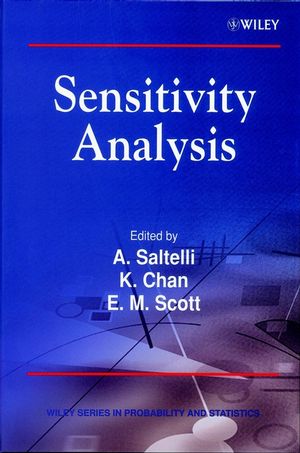Sensitivity Analysis: Gauging the Worth of Scientific ModelsISBN: 978-0-471-99892-1
Hardcover
504 pages
October 2000
 This is a Print-on-Demand title. It will be printed specifically to fill your order. Please allow an additional 10-15 days delivery time. The book is not returnable.
Other Available Formats: Paperback
|
||||||
Sensitivity analysis is used to ascertain how a given model output depends upon the input parameters. This is an important method for checking the quality of a given model, as well as a powerful tool for checking the robustness and reliability of its analysis. The topic is acknowledged as essential for good modelling practice, and is an implicit part of any modelling field.
· Offers an accessible introduction to sensitivity analysis
· Covers all the latest research
· Illustrates concepts with numerous examples, applications and case studies
· Includes contributions form the leading researchers active in developing strategies for sensitivity analysis
The principles of sensitivity analysis area carefully described, and suitable methods for approaching many types of problems are given. The book introduces the modeller to the entire causal assessment chain, from data to predictions, whilst explaining the impact of source uncertainties and framing assumptions. A 'hitch-hiker's guide' is included to allow the more experienced reader to readily access specific applications.
Modellers from a wide range of disciplines, including biostatistics, economics, environmental impact assessment, chemistry and engineering will benefit greatly form the numerous examples and applications.
· Offers an accessible introduction to sensitivity analysis
· Covers all the latest research
· Illustrates concepts with numerous examples, applications and case studies
· Includes contributions form the leading researchers active in developing strategies for sensitivity analysis
The principles of sensitivity analysis area carefully described, and suitable methods for approaching many types of problems are given. The book introduces the modeller to the entire causal assessment chain, from data to predictions, whilst explaining the impact of source uncertainties and framing assumptions. A 'hitch-hiker's guide' is included to allow the more experienced reader to readily access specific applications.
Modellers from a wide range of disciplines, including biostatistics, economics, environmental impact assessment, chemistry and engineering will benefit greatly form the numerous examples and applications.



